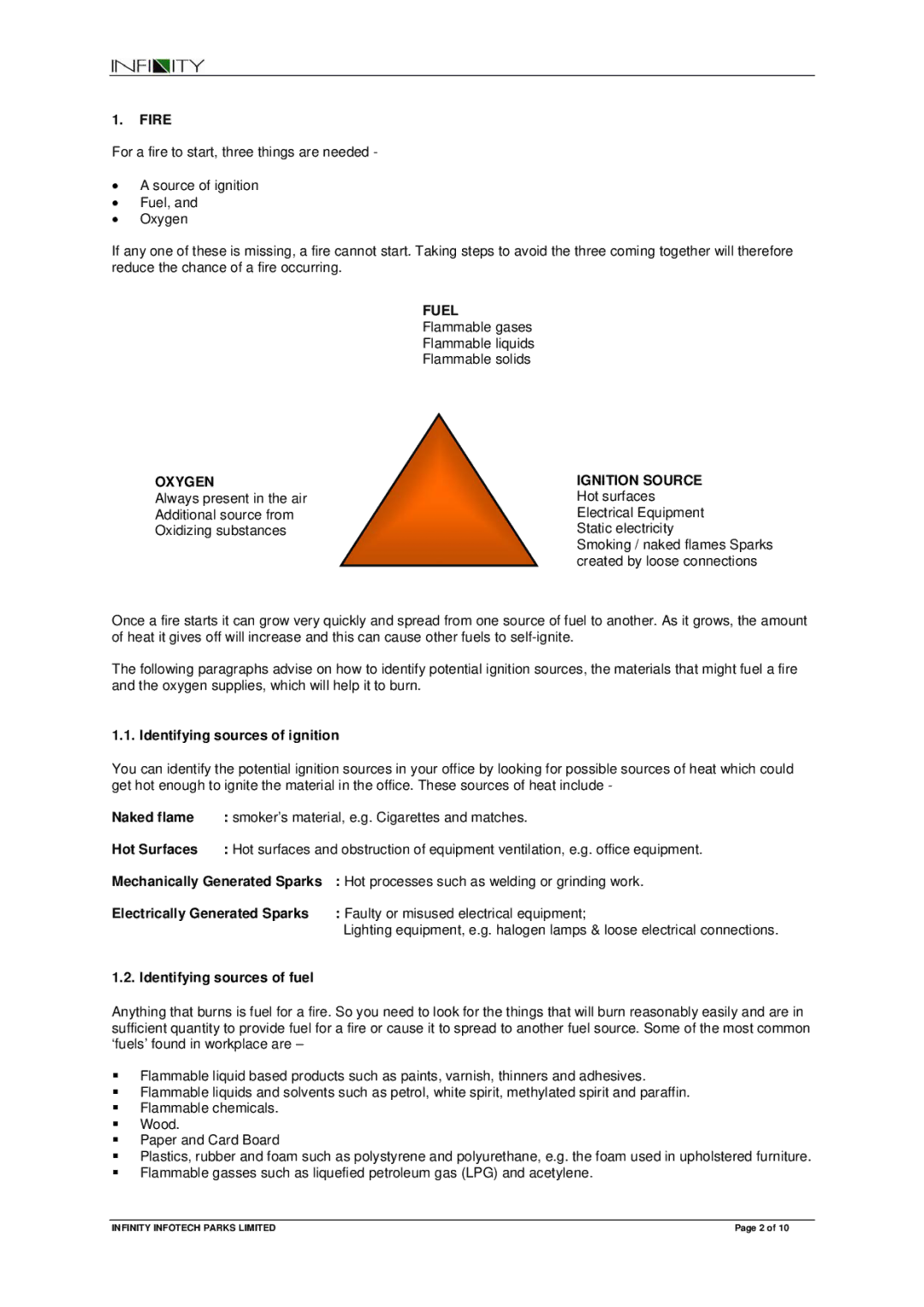
1.FIRE
For a fire to start, three things are needed -
•A source of ignition
•Fuel, and
•Oxygen
If any one of these is missing, a fire cannot start. Taking steps to avoid the three coming together will therefore reduce the chance of a fire occurring.
FUEL
Flammable gases
Flammable liquids
Flammable solids
OXYGEN
Always present in the air Additional source from Oxidizing substances
IGNITION SOURCE Hot surfaces Electrical Equipment Static electricity
Smoking / naked flames Sparks created by loose connections
Once a fire starts it can grow very quickly and spread from one source of fuel to another. As it grows, the amount of heat it gives off will increase and this can cause other fuels to
The following paragraphs advise on how to identify potential ignition sources, the materials that might fuel a fire and the oxygen supplies, which will help it to burn.
1.1. Identifying sources of ignition
You can identify the potential ignition sources in your office by looking for possible sources of heat which could get hot enough to ignite the material in the office. These sources of heat include -
Naked flame | : smoker’s material, e.g. Cigarettes and matches. | |
Hot Surfaces | : Hot surfaces and obstruction of equipment ventilation, e.g. office equipment. | |
Mechanically Generated Sparks | : Hot processes such as welding or grinding work. | |
Electrically Generated Sparks | : Faulty or misused electrical equipment; | |
Lighting equipment, e.g. halogen lamps & loose electrical connections.
1.2. Identifying sources of fuel
Anything that burns is fuel for a fire. So you need to look for the things that will burn reasonably easily and are in sufficient quantity to provide fuel for a fire or cause it to spread to another fuel source. Some of the most common ‘fuels’ found in workplace are –
Flammable liquid based products such as paints, varnish, thinners and adhesives.
Flammable liquids and solvents such as petrol, white spirit, methylated spirit and paraffin.
Flammable chemicals.
Wood.
Paper and Card Board
Plastics, rubber and foam such as polystyrene and polyurethane, e.g. the foam used in upholstered furniture.
Flammable gasses such as liquefied petroleum gas (LPG) and acetylene.
INFINITY INFOTECH PARKS LIMITED | Page 2 of 10 |
